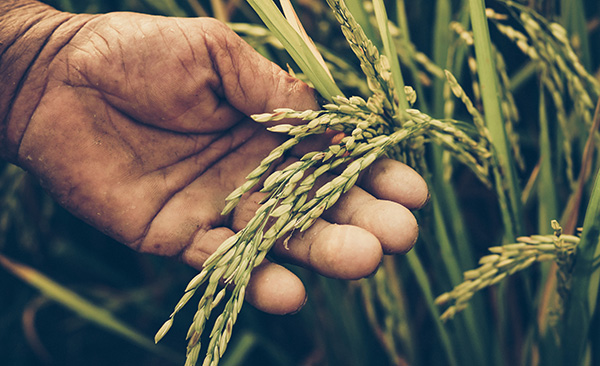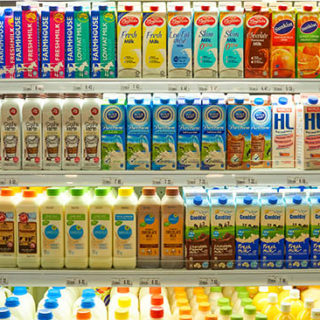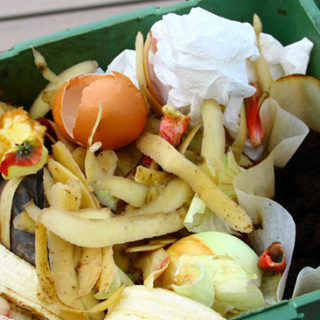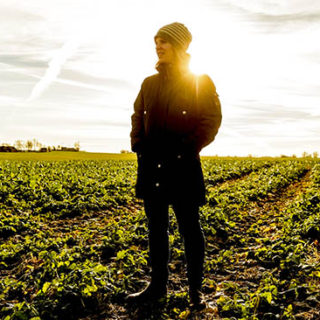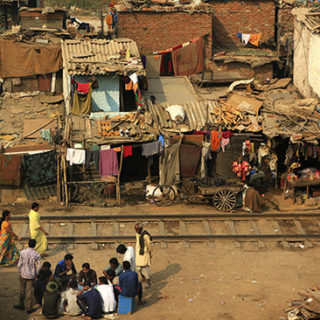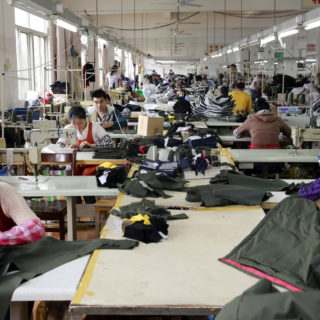Perennial crops for sustainable agriculture
“We cannot cultivate crops the way we do today if we want to create truly sustainable agriculture. We must be open to using other types of crops than annual crops and we must move away from the narrow use of monocultures”, says Lennart Olsson from the Lund University Centre for Sustainability Studies.
Research into developing and cultivating perennial alternatives to our common agricultural crops is underway in many different parts of the world – and interest is growing fast.
Today’s agriculture has many negative effects on the environment. They are caused by things like nitrogen leaching from the soil, methane gas emissions from grazing animals and manure, carbon dioxide from soil processing, the use of diesel fuel and reduced biodiversity.
In particular, the cultivation of annual crops such as wheat, rice, soya beans and various oil-based plants is problematic, according to Lennart Olsson from the Lund University Centre for Sustainability Studies. Every season, farmers must break up and brutally terminate the biological processes in the soil. The crops must also be sprayed with herbicides and pesticides to prevent damage from pests and plant diseases. The annual crops contribute to soil erosion and loss of nutrients as the soil is turned upside down every time new crops are sown. All this mechanical processing damages the field soil, according to Olsson, and consumes a lot of diesel fuel.
Furthermore, crops are to a large extent grown as monocultures, i.e. with large areas dedicated to a single crop with a minimum of genetic variation. This has led to increasing problems with weeds, pests and plant diseases, in turn resulting in increased dependency on chemical herbicides and pesticides.
Lennart Olsson is working together with researchers at the Swedish University of Agricultural Sciences (Alnarp and Ultuna) and the Land Institute in Kansas (USA). The research deals with developing and cultivating perennial crops, i.e. crops that last several years and do not need to be sown every year. Perennial crops also benefit from being cultivated in combination with other crops in polycultures. Cultivating grain together with nitrogen-fixing beans and pulses optimises the natural fixing of nitrogen, thereby reducing the need for artificial fertilisers. Cultivating perennial crops also makes it more difficult for weeds to establish themselves in the fields.
“Since perennial crops do not need to be sown every year, soil erosion can be reduced and nutrient leaching can be minimised.”
Within this research field, various approaches are being tested to develop perennial crops. For example, attempts are being made to cross a wild African perennial relative of rice with the domesticated annual Asiatic rice, which gives a high yield.
“The new rice has so far only been cultivated in China but we have now started testing it in Uganda, where we have also introduced experiments with cultivation of perennial variants of sorghum in polycultures.”
With regard to other types of grain such as wheat and barley, two approaches have been. One involves trying to find wild perennial relatives and crossing them with domesticated varieties to obtain a perennial crop with a high yield. The other approach involves finding wild perennial species which can be domesticated. At the Land Institute, a new, wheat-like perennial crop, Kernza, has been successfully domesticated.
“Kernza is now being tested in trial cultivations for the first time in Europe, at both Alnarp and Ultuna, and we hope shortly to be able to scale up the experiments and even develop commercial products based on Kernza.”
According to Lennart Olsson, there are many advantages to perennials. As the crops are not sown every year, soil erosion can be reduced almost to zero and nutrient leaching can be minimised. Diesel emissions from agricultural machinery drop drastically and farmers can use fewer pesticides and herbicides. Perennial crops such as Kernza have also proven to be better at reducing nitrogen leaching and building up humus content. At the same time, Kernza in particular can be cultivated in various types of climate as the crop is probably more hardy than wheat, for example.
Olsson thinks that farmers should welcome perennial crops as conventional agriculture uses a very large part of its gross revenue to buy external inputs, mainly seeds, pesticides, artificial fertiliser, machines and diesel. These costs can be significantly reduced with perennial crops.
“But the road to large-scale perennial agriculture is still fairly long”, he says.
This is due to the major challenges involved in making perennial crops operational. For example, their yield is still lower than that of conventional crops, although this could improve within around ten years, and there is a lack of knowledge about the properties of the new crop types for baking and other areas of application.
Lennart Olsson believes that we can learn from American experiences – there are bakeries, breweries, pasta producers and restaurants already using Kernza in their activities.
“With regard to Kernza, the Land Institute has been able to increase the yield by around 10 % for each round of improvement through breeding, allowing us to hope that, in time, its yield could even surpass that of wheat. The advantage of Kernza is that it produces much more biomass than wheat – both above and below the soil surface.”
Within 15–20 years, he believes that perennial crops will have become a natural part of the agricultural industry. But Kernza will never replace wheat completely – particularly because it does not contain as much gluten. For fermentation, wheat must be added to the flour, even though Kernza flour is very suitable for baking.
“From a flavour point of view, I think it tastes much better than wheat, and it is also a good alternative for those who are allergic or sensitive to gluten.”
Other challenges in going over to perennial crops are strong economic and political interest in maintaining conventional agriculture, from stakeholders such as the seed and pesticide industries, along with political governance with ties to agrobusiness.
“They see major drawbacks in farmers eventually buying less seed, pesticides and artificial fertilisers. But we foresee a development towards perennial crops as a necessity for the environment and the food supply, but also for the long term economic development of agriculture and rural areas, and perhaps even for our own survival”, concludes Lennart Olsson.
Text: Noomi Egan


